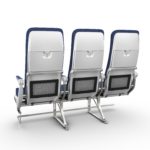Pipistrel, a leading manufacturer of electrically powered light aircraft, is betting on the growing importance militaries worldwide are placing on sustainability to drive sales in its portfolio of aircraft.
The Slovenian company’s fleet of aircraft – including the Velis Electro and Surveyor – are suitable for a range of missions including training and intelligence, surveillance and reconnaissance (ISR).
Sustainability is key
Rob Scholl, President and CEO of Textron eAviation, said: “For military customers, sustainability is becoming more and more of an issue. For training missions, governments around the world are starting to mandate that their military forces look at sustainable options.
“We are talking to a number of government entities about aircraft like the Velis being a potential training solution for them. So I think those are very exciting discussions for us as we talk to global military customers.”
He added: “Pipistrel brings something new in the light aircraft space that we have not traditionally played in. Very efficient, great sustainability platform, and great unmanned capabilities.”
Farnborough International Airshow
Pipistrel will be exhibiting at Farnborough International Airshow next week for the first time under the Textron eAviation umbrella.
Textron acquired Pipistrel in April as part of its sustainable aviation product strategy, and will be showing Pipistrel’s Surveyor aerial surveillance platform at its chalet.
“The surveyor is an optionally piloted platform – it can be piloted or it can be set up for remote or autonomous flight,” said Scholl, who added that it also had “impressive payload capability, 300kg, so it can be used for cargo”.
Glider mentality
He said: “What we have seen most customers use it for is an ISR-type of platform. If you look at performance numbers, it has endurance capabilities of 30 hours or more, good altitude performance up to 30,000 feet, and it has rugged, off-airport capabilities.
“It is built with Pipistrel’s glider mentality, so it is easy to disassemble and be put in a trailer and be hauled around by a truck.
“Economically, it is a relatively low-cost base aircraft because it is built using a lot of the existing Pipistrel designs. Also economic to operate just by its low fuel consumption, given the low drag and high efficiency design.”
Expanding Pipistrel’s footprint
Textron hopes to use the airshow to promote Pipistrel products in a way that has not been possible previously.
“We would like more exposure for the Surveyor platform; one of Pipistrel’s challenges in the past has been that they have had great aircraft but not the sales reach that they might have wanted,” Scholl said.
“Since the acquisition by Textron, you see a lot more interest because people view us as having capabilities to help expand Pipistrel’s footprint, their service and support and overall engineering capabilities.”

